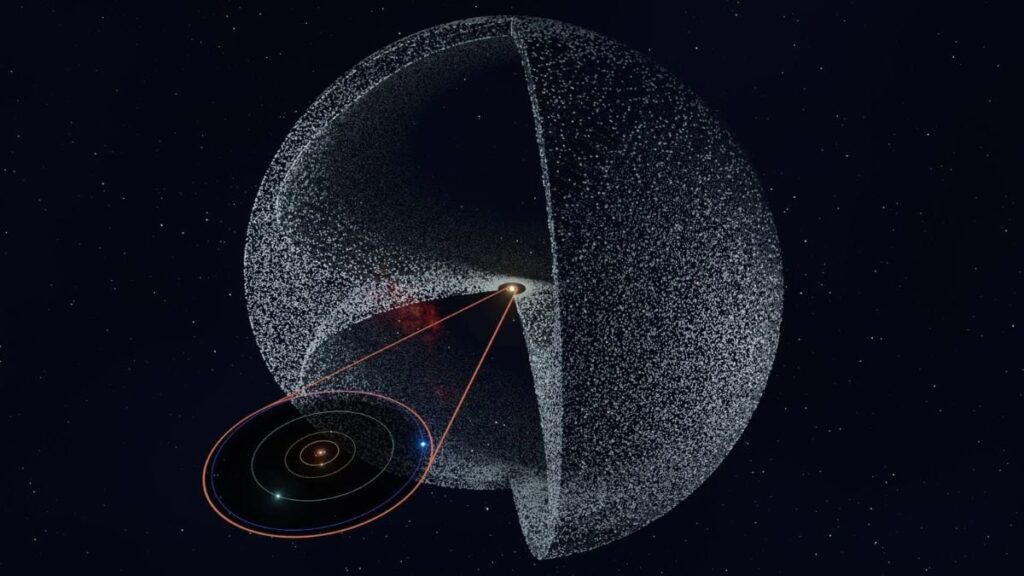An unexpected spiral structure has been identified at the edge of the solar system, potentially altering current understanding of the Oort Cloud. This discovery has emerged from a computational model developed using data from comets and gravitational influences. The Oort Cloud, a distant shell of icy bodies, has long remained an enigma due to its extreme distance from Earth. The latest findings suggest that its inner regions may form a spiral-like pattern, offering a fresh perspective on the cloud’s composition and dynamics.
Findings from New Research
According to a study published on the preprint server arXiv, the Oort Cloud, previously thought to be a spherical shell of icy debris, may actually exhibit a structure akin to a spiral disk. The research, led by astronomer David Nesvorný and his team at the Southwest Research Institute in Colorado, utilised simulations run on NASA’s Pleiades supercomputer to generate a model of the Oort Cloud’s inner structure. The findings indicate that gravitational forces from the Milky Way, including interactions with stars and black holes, may have shaped the Oort Cloud into a more intricate form than previously assumed.
Galactic Influences and Structural Implications
As per the study, the phenomenon of galactic tide plays a significant role in shaping the Oort Cloud. This force, which originates from the collective gravitational influence of the Milky Way, is particularly strong on objects residing in the outermost parts of the solar system. The newly proposed model suggests that the Oort Cloud’s inner section, spanning between 1,000 and 10,000 astronomical units (AU), forms a spiral structure stretching approximately 15,000 AU. This challenges previous theories that depicted the Oort Cloud as a relatively uniform and isotropic region.
Challenges in Direct Observation
As reported, due to its vast distance from Earth, the Oort Cloud remains nearly impossible to observe directly. Even NASA’s Voyager 1 spacecraft, travelling at a speed of 1.6 million kilometres per day, is expected to take another 300 years to reach its boundary and around 300,000 years to pass through it completely. Researchers suggest that tracking long-period comets or detecting faint reflected light from the Oort Cloud’s icy bodies may be the best approach to confirm the newly proposed structure.
Future Investigations
Scientists believe further observational studies and refined computational models could help verify the presence of this spiral pattern. Understanding the true shape and composition of the Oort Cloud is crucial for comprehending the origins of comets and the solar system’s early formation. While current resources are not yet dedicated to such observations, researchers indicate that further exploration of this distant region could provide valuable insights into the broader workings of our cosmic neighbourhood.


